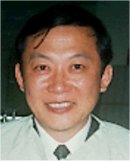|
|
Plenary Lecture
Analytical Synthesis Method - A New Mathematical Design Method for the
Analog Circuit Design

Professor Chun-Ming Chang
Dept. of Electrical Engineering
Chung Yuan Christian University
Chung-Li, Taiwan 32023
R. O. China
E-mail:
chunming@dec.ee.cycu.edu.tw
Abstract:
Analytical Synthesis Method (ASM) has been presented in several papers
published in the IEEE Transactions on Circuits and Systems since 2003.
It is one of the powerful design methods in the field of analog circuit
design. It is the method using a succession of innovative algebra
manipulation operations to decompose a complicated transfer function
representing the relationship between the output and the input signals
of a design project into many simple equations feasible by using the
corresponding simple sub-circuitries. The simple sub-circuitries can be
constructed by the desired configuration of the element such as the
single-ended-input operational transconductance amplifiers (OTAs) and
the grounded capacitors, both of which are used for absorbing and
reducing the shunt parasitic capacitance and lead to have more precise
output responses. In addition to this, the ASM can control the number of
the terms in the complicated decomposition process such that the number
of both active and passive components used in the circuit is the least
compared to the previously reported ones. Then, the ASM is the only one
method which can simultaneously achieve the three important criteria for
the design of OTA-C circuits without trade-off.
Due to the flexibility of the ASM, the simple sub-circuitries used in
the circuit design can be changed and chosen according to different
necessities for the target of the circuit design. For example, if the
reduction of the number of the active and passive components used in the
circuit is more important than the type of the element configurations
like single-ended-input/differential-input OTAs and grounded/floating
capacitors due to the consideration about power consumption, chip area,
noise, and total parasitics……, etc., the minimum component OTA-C circuit
can also be investigated and developed successfully using the ASMs. The
fully flexible characteristic and the real demonstration in the
literature of the ASM may make it be one of the most prospective methods
in the field of analog circuit design in the near future.
Brief Biography of the Speaker:
Chun-Ming Chang received the B.S.E.E. and M.S.E.E. degrees from National
Cheng Kung University, Tainan, Taiwan, R. O. C. in 1975 and 1977,
respectively, and the Ph.D. degree from the University of Southampton,
Southampton, U.K., in 2004.
In 1979, he joined the Department of Electrical Engineering, Taipei
Institute of Technology, Taipei, Taiwan, R. O. C., as a Lecturer. After
one year, he transferred to the Department of Electronic Engineering, Fu
Jen Catholic University, Taipei Hsien, Taiwan, R.O.C. In 1982, he joined
the Department of Electrical Engineering, Chung Yuan Christian
University, Chung-Li, Taiwan, R.O.C., where he became an Associate
Professor and a Full Professor in 1985 and 1991, respectively. He is
currently a Professor of Electrical Engineering and leader of the
Electronic Circuits Group in the Department of Electrical Engineering,
Chung Yuan Christian University. He is also a departmental teacher
promotion committee member and a college teacher promotion committee
member. He was the chairman of the Department of Electrical Engineering
of Chung Yuan Christian University from 1995 to 1999. His research
interests are divided into two parts: network synthesis and analog
circuit design before and after 1991, respectively. The improvement for
the approach technique to factorize a paramount matrix used in network
synthesis and proposed by Professor I. Cederbaum let him be promoted to
a Full Professor in 1991. He has published over 70 SCI papers, in which
the most famous is the invention of a new analytical synthesis method
for the design of analog circuits which can, for the first time,
simultaneously achieve three important criteria for the design of OTA-C
filters without trade-offs. Using a succession of innovative algebra
manipulation operations, a complicated nth-order transfer function can
be decomposed into a set of simple equations feasible using the
single-ended-input OTAs and grounded capacitors. Several IEEE
Transaction papers on Circuits and Systems with analytical synthesis
method have been published in the literature since 2003. Recently, he
was invited as the Plenary Speaker of the (i) 7th WSEAS International
Conference on Instrumentation, Measurement, Circuits and Systems (IMCAS
’08), Hangzhou China, April 6-8, 2008; (ii) 8th WSEAS International
Conference on Electronics, Hardware, Wireless and Optical Communications
(EHAC’09), University of Cambridge, UK, February 21-23, 2009; and (iii)
11th WSEAS International Conference on Mathematical and Computational
Methods in Science and Engineering (MACMESE’09), Baltimore USA, November
7-9, 2009. He is in the process of writing his professional textbook:
“Analog Circuit Design---Analytical Synthesis Method”.
Prof. Chang is a senior member of the IEEE Circuits and Systems Society.
|
|
|